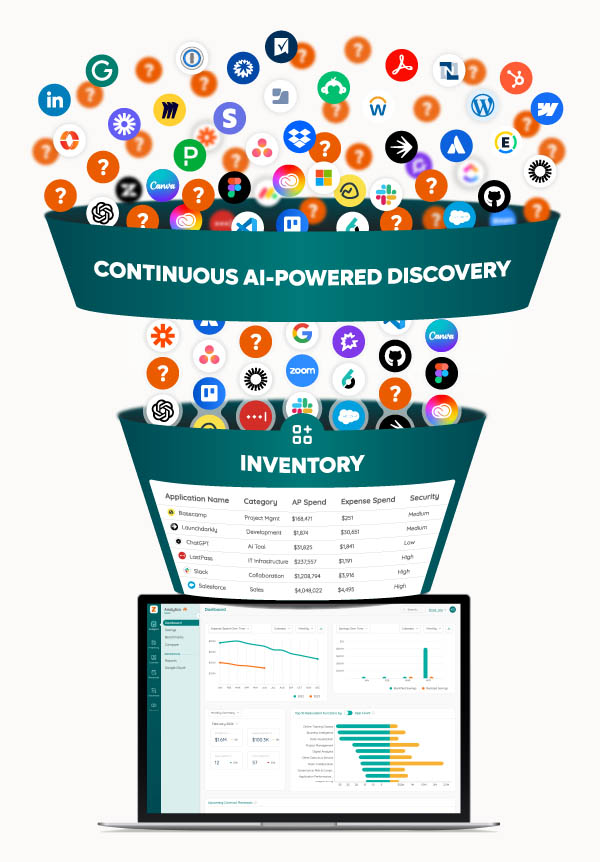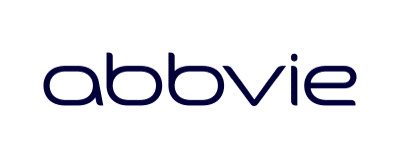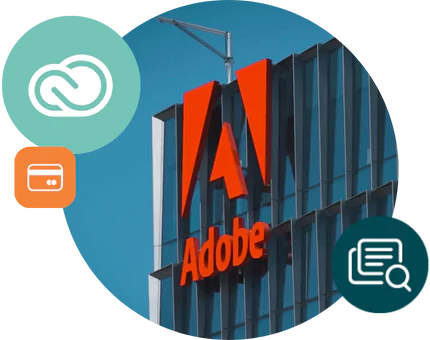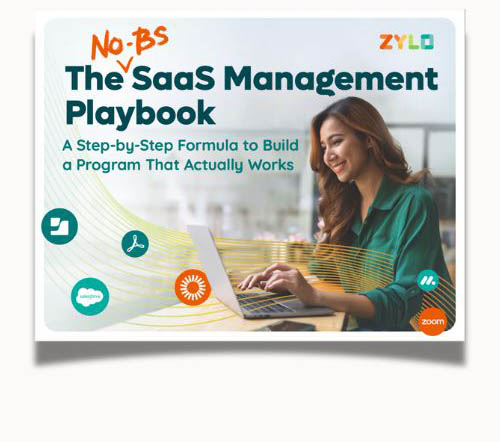 Your leadership team has bought into SaaS Management and is ready to prioritize it as a strategic business initiative. How do you actually get started? Who needs to be involved?
Your leadership team has bought into SaaS Management and is ready to prioritize it as a strategic business initiative. How do you actually get started? Who needs to be involved?
It’s time to cut through the noise and begin a tried and true approach. In this guide you’ll discover a clear, step-by-step formula to stand up a program and get the right stakeholders involved. Consider it the map for your SaaS Management journey – a journey taken by our most successful customers.
Read on for the first three steps you need to follow and download the full playbook below.
 STEP ONE:
STEP ONE:
Build an Enterprise SaaS System of Record
A SaaS system of record is the cornerstone of successful inventory management, providing a comprehensive view of all your apps. Inventory management is the starting point and foundation of your entire SaaS Management program. No matter your goals, you need reliable, up-to-date, continuous discovery of all SaaS — no matter who purchased it and how it was purchased. After all, data is greater than opinion and should drive all your business decisions.
Once you’ve selected your SaaS Management Platform, it’s time to start the discovery process and build your SaaS system of record — the blueprint that will guide your SaaS Management journey.
To initiate the discovery process, connect financial data sources (Accounts Payable, often known, approved software; and employee expense, often known as shadow IT) to your SMP. Then, an SMP like Zylo will automatically analyze the data to import SaaS transactions and weed out hidden expensed software. For instance, Zylo’s Zybrary — a library of 22k+ applications — provides always-on financial discovery powered by AI to uncover all the SaaS applications in your environment.
Be prepared for a wealth of data and information. You’re going to find a lot of apps you weren’t expecting — including shadow IT. In fact, companies underestimate the size of their portfolios by 170% and spending by 304%! It can feel overwhelming. Let this methodology guide you as you tackle it step by step.
Remember: Discovery isn’t a one-time event. Because the average company has 6-10 new apps entering its ecosystem every month, comprehensive and continuous discovery is critical.
Step Two:
Strategic Portfolio Management (Tier Your Apps)
During the discovery process, you’ll likely find hundreds of SaaS apps. Obviously, you can’t tackle all these apps at the same time. Instead, you must prioritize them by their strategic importance to your organization.
Applications are typically categorized into three tiers.
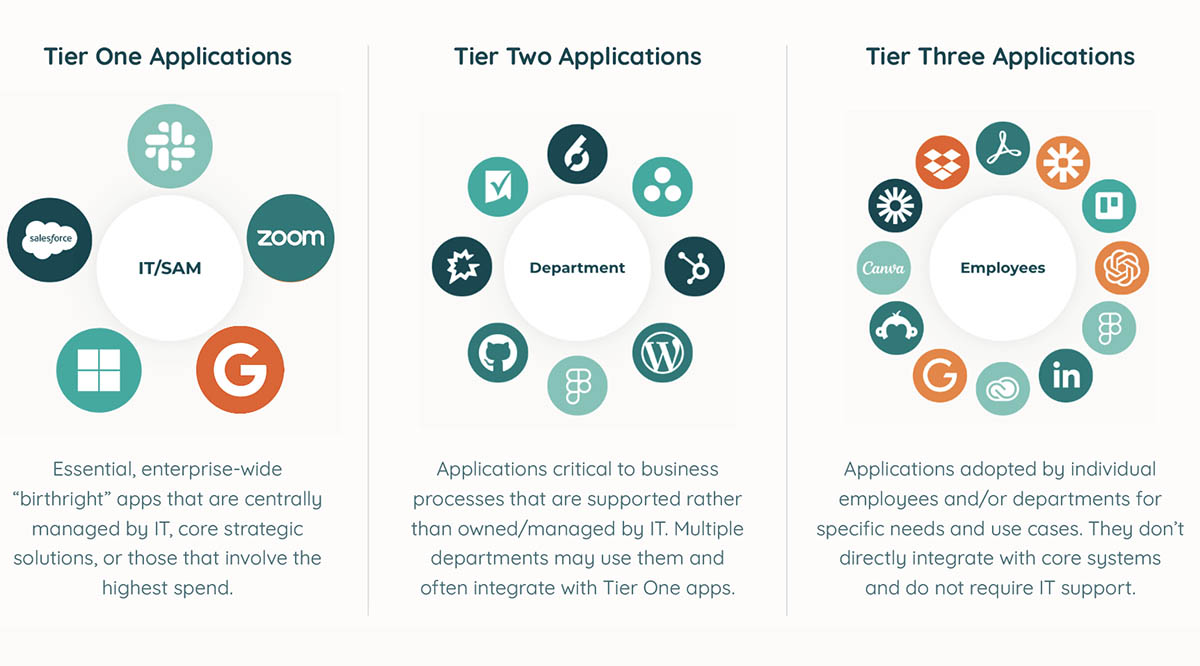
Tier One: Core/IT-Managed Applications
These are essential, enterprise-wide “birthright” apps that are centrally managed by IT, core strategic solutions, or those that involve the highest spend. Some examples include:
- Google Workspace
- Microsoft 365
- Zoom
- Slack
- Salesforce
Why start here? Apps that are centrally managed by IT are often some of the largest applications in use across your company. In addition, they are managed by a single team typically tightly aligned to SaaS Management success. The outcomes generated on your Tier One applications are the foundation used to mature and expand your program to Tier Two and Three applications.
Then, identify which apps are the most critical to manage usage for. You can figure it out by asking questions like:
- Which apps are we constantly being asked to get more licenses for?
- Which apps have costs that are ballooning out of control?
Tier Two: Large Departmental Applications
These applications are critical to business processes – but they’re supported rather than owned/managed by IT. Multiple departments may use Tier Two apps which often integrate with Tier One apps.
Tier Three: Long-Tail, Business-Process Applications
These are applications adopted by individual employees and/or departments for their specific needs and use cases. They don’t directly integrate with core systems and do not require IT support.
Once you’ve tiered all your apps, start with onboarding your Tier One applications.
Step Three:
Onboard Tier One Applications into Your SaaS Management Platform
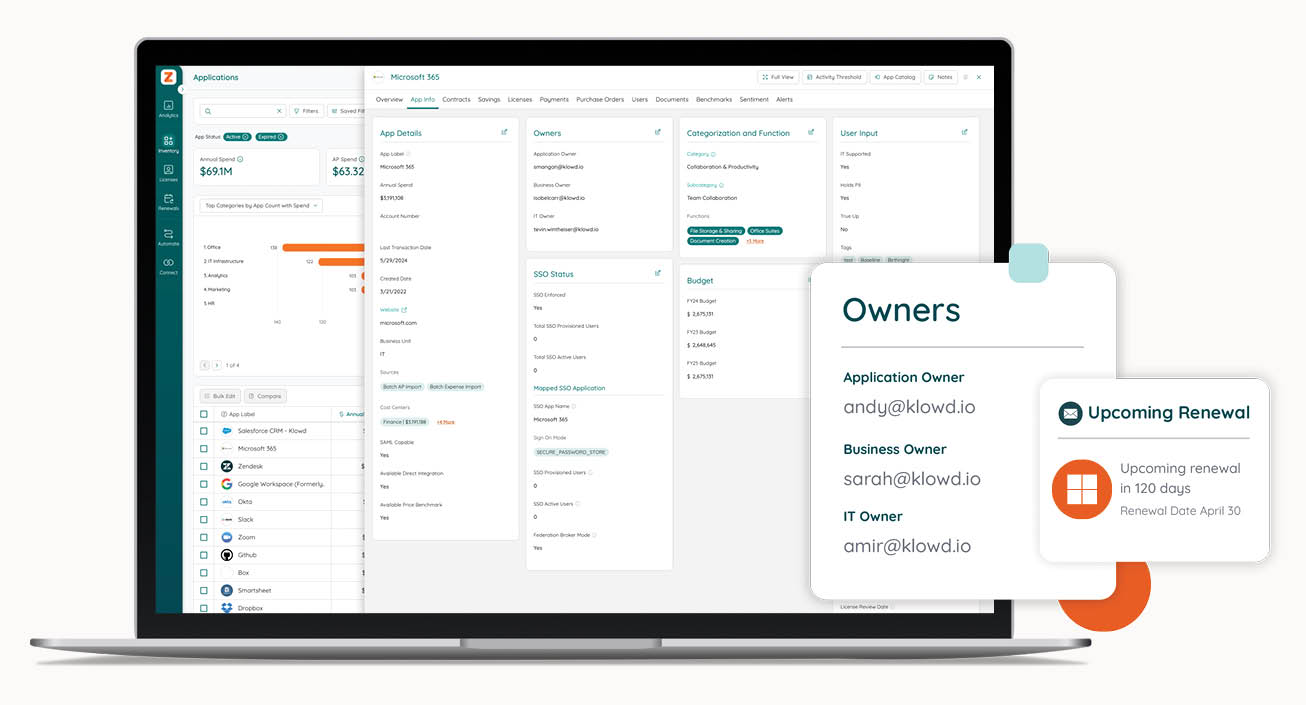 Onboarding is the process of adding and centralizing relevant information in your SaaS system of record, specifically:
Onboarding is the process of adding and centralizing relevant information in your SaaS system of record, specifically:
- Who is the owner?
- What SKUs and entitlements are embedded in the contract?
- What does our utilization look like?
At this step, you’re bringing in contracts and setting up utilization integrations to applications to centralize usage data. Start this process with your Tier One apps.
As you onboard your Tier One applications into a system of record, include the following data:
- App metadata (such as annual spend, SSO status, and business criticality)
- Contracts
- Usage
- Owners
Another important aspect of onboarding is setting up alerts to manage your inventory proactively. For example, you’ll want to be alerted when new apps enter your environment so you can properly onboard them.
To do this, you will need to set alerts for upcoming renewals. For example, you may set up alerts 120, 90, and 60 days prior to a renewal so you can ensure you proactively prepare for it.
The No-BS SaaS Management Playbook
Since pioneering SaaS Management 8+ years ago, Zylo has helped hundreds of customers successfully implement a SaaS Management solution and program. The No-BS SaaS Management Playbook distills our experience, offering a step-by-step approach to building an effective, programmatic practice — and avoiding the most common pitfalls we’ve seen. Read the complete guide to learn:
- The three elements you must have in place before implementing a SaaS Management program
- What steps to take to get your SaaS Management program off the ground based on a proven framework used by Zylo’s most successful customers
- The secret to driving alignment, working well cross-functionally, and ensuring accountability for results


